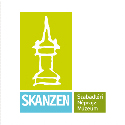Herman Ottó Museum
Herman Ottó Museum: Home in music
The pilot project is a community and art based programme series focusing on intangible cultural heritage, related to Ukrainian music and traditions. Its main activities were musical performances, guided tours, museum education sessions, city walks and joint excursions. The five events series included four Saturday family days and one programme durint the spring school holiday.
The target group of the pilot project was Ukrainian families who had fled to the city of Miskolc. Around 6–8 families (approximately 20–30 people) participated regularly in the programmes, but including those who came for individual events, the project reached approximately 50–60 people.
Within the framework of the Ukrainian music programme series implemented in several venues and exhibitions of the museum, the participants were able to get acquainted with the folk-inspired works of the composers of the “Ukrainian Baroque”, hear arrangements of Ukrainian folk songs, with a special focus on the heritage of the Dnieper Cossack song culture. In the dance hall, they could try traditional Ukrainian (kolomejka, gopák, kolo, vesznyánka) and Hungarian dances, as well as folk round games accompanied by singing. They learned about Hungarian and Ukrainian cultural traditions and parallel historical and folk customs.
The three pillars of the project methodology are:
1) musical elements of the Ukrainian intangible cultural heritage
2) Hungarian musical parallels
3) related museum collections.
The application of art pedagogical methodologies was a novelty. The museum strengthened its own offer by involving external specialists (Ukrainian and Hungarian musicians and dancers, performers) and each time presented the Ukrainian and Hungarian cultural parallels of the given topic.
One of the unique features of the project is that an important partner in its preparation and implementation was Vihula Mihajlo, a Ukrainian guitarist living in Miskolc for many years. He played a key role in the development of the programme series, in reaching the target group, involving them and he also contributed to the project realisation as an interpreter. The Ukrainian and Hungarian artists and art students recommended by him prepared a thematic music programme, a concert, singing lessons, instrument presentations, dance lessons, a musical performance and an interactive programme for children. All eight Ukrainian artists performing in the project events were displaced persons, and the project gave them the opportunity to work again in their original professions, which had a positive effect on their self esteem.
Adaptation:
The pilot project may be adapted primarily in museums who have contact with communities representing different cultural backgrounds (e.g. displaced persons, nationalities, ethnic, linguistic or religious minorities), and where the need for intercultural dialogue and social integration arises. The overall artistic nature of the project (Ukrainian musical heritage and Hungarian parallels, fine art and folk art inspirations, connections inspired by the museum collection) can be transferred to other museums and cultural institutions. The principle of community participation applied here may also be adapted in other projects, including the followings: addressing and involving the members of the target group in the development of the project, monitoring feedback, flexible modification based on the reflections, best adaptation to the needs and goals of the participants. An important feature of the project is the interpretation of the museum as an open, inclusive and safe place. The returning participants of the project became increasingly interested in the museum and attached to it due to the hospitality of the institution and the positive experiences.
Feedback of the participants:
The project participants gave positive feedback to the satisfaction questionnaire regarding whether the project had increased their knowledge about Ukrainian intangible cultural heritage elements:
“I learned that there are similarities between Ukrainian and Hungarian folk instruments. I saw many new and interesting things during the trip, and it was an incredibly great experience to see 2.5 million year old trees.”
“I really enjoyed listening to Ukrainian music and songs performed by Mihajlo Vihola.”
“I learned more about folklore, dances and traditional ceremonies.”





